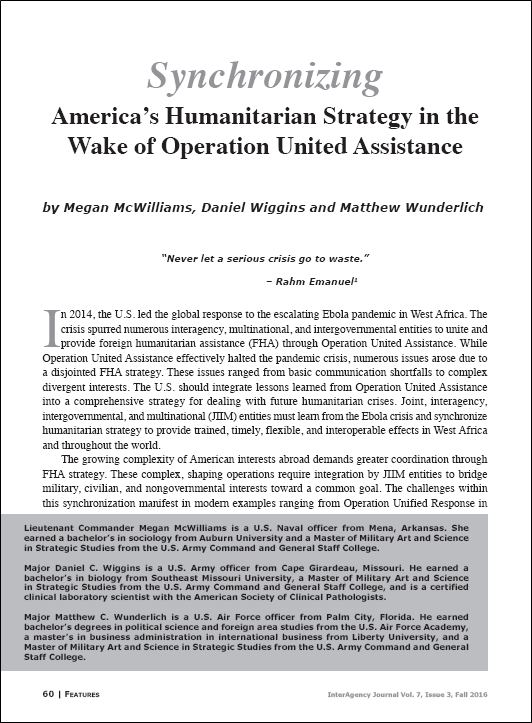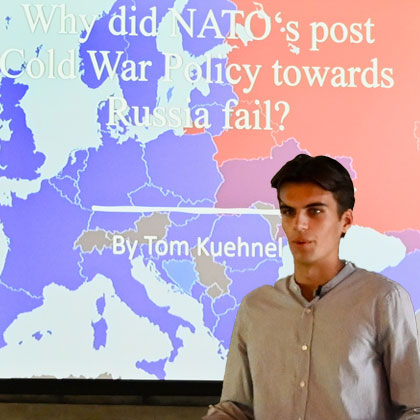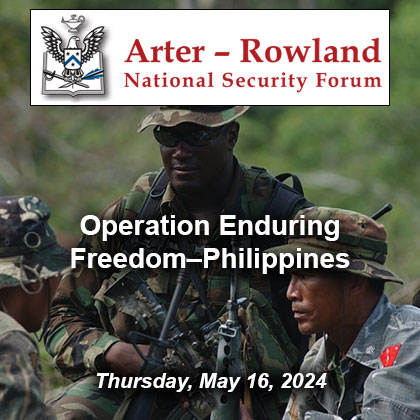Featured Article: Synchronizing America’s Humanitarian Strategy
Featured article:
Synchronizing America’s Humanitarian Strategy in the Wake of Operation United Assistance
by Megan McWilliams, Daniel Wiggins and Matthew Wunderlich
In 2014, the U.S. led the global response to the escalating Ebola pandemic in West Africa. The crisis spurred numerous interagency, multinational, and intergovernmental entities to unite and provide foreign humanitarian assistance (FHA) through Operation United Assistance. While Operation United Assistance effectively halted the pandemic crisis, numerous issues arose due to a disjointed FHA strategy. These issues ranged from basic communication shortfalls to complex divergent interests. The U.S. should integrate lessons learned from Operation United Assistance into a comprehensive strategy for dealing with future humanitarian crises. Joint, interagency, intergovernmental, and multinational (JIIM) entities must learn from the Ebola crisis and synchronize humanitarian strategy to provide trained, timely, flexible, and interoperable effects in West Africa and throughout the world.
The growing complexity of American interests abroad demands greater coordination through FHA strategy. These complex, shaping operations require integration by JIIM entities to bridge military, civilian, and nongovernmental interests toward a common goal. The challenges within this synchronization manifest in modern examples ranging from Operation Unified Response in Haiti to Operation United Assistance in Africa. The U.S. Army framed the difficulty of this complexity by issuing its persistent Warfighting Challenges that include ensuring interoperability in JIIM environments and shaping the security environment.2 As operational environments continue to grow in complexity, JIIM entities require a corresponding increase in synchronization to conduct future humanitarian operations.
Achieving the comprehensive humanitarian strategy necessary for future FHA operations requires understanding and articulating the complex relationship among ends, ways, means, and risk in the pursuit of humanitarian objectives.
Read the full article
Synchronizing America’s Humanitarian Strategy in the Wake of Operation United Assistance PDF
Download the complete edition
IAJ 7-3 (Fall 2016) PDF
IAJ 7-3 (Fall 2016) ePub
Lieutenant Commander Megan McWilliams is a U.S. Naval officer from Mena, Arkansas. She earned a bachelor’s in sociology from Auburn University and a Master of Military Art and Science in Strategic Studies from the U.S. Army Command and General Staff College.
Major Daniel C. Wiggins is a U.S. Army officer from Cape Girardeau, Missouri. He earned a bachelor’s in biology from Southeast Missouri University, a Master of Military Art and Science in Strategic Studies from the U.S. Army Command and General Staff College, and is a certified clinical laboratory scientist with the American Society of Clinical Pathologists.
Major Matthew C. Wunderlich is a U.S. Air Force officer from Palm City, Florida. He earned bachelor’s degrees in political science and foreign area studies from the U.S. Air Force Academy, a master’s in business administration in international business from Liberty University, and a Master of Military Art and Science in Strategic Studies from the U.S. Army Command and General Staff College.

READ THE LATEST UPDATES FROM THE SIMONS CENTER
"*" indicates required fields


